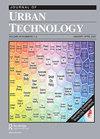城市公交乘客推特:理解情感和礼貌
IF 4.6
3区 经济学
Q1 URBAN STUDIES
引用次数: 4
摘要
随着Web 2.0的日益普及,使用像Twitter这样的社交媒体来表达用户的情感或观点的人数激增。交通运营中的延误和故障会让乘客感到烦恼和恼火,因此,他们会通过社交媒体帖子表达自己的愤怒和沮丧。了解公众不满的引爆点将有助于制定更好的解决方案。本研究旨在通过开发多层次情感分析来开发一个框架,并使用来自纽约(纽约市)和加利福尼亚(旧金山)的交通相关推文来确定情感和礼貌措施。与纽约和加州交通系统相关的热门标签是在2019年收集的。在这两种状态下,与消极情绪相关的词汇差别很大。在这两个国家的礼貌措施中可以看到中等程度的差异。此外,与负面情绪相关的共现措施根据人口统计数据确定了独特的问题。这项研究表明,Twitter提供了一个很好的机会来了解公众对交通的看法,研究结果可以帮助当局设计一个更有效的交通系统,以改善用户体验。本文章由计算机程序翻译,如有差异,请以英文原文为准。
City Transit Rider Tweets: Understanding Sentiments and Politeness
ABSTRACT With the expanding popularity of Web 2.0, there has been a huge surge in the use of social media, like Twitter, to express user sentiments or opinions. Delays and breakdowns in transit operations can make riders annoyed and irritated, and as a result, they express their anger and frustration via social media posts. Understanding the tipping points of public frustration will help in developing better solutions. This study aims to develop a framework by developing multilevel sentiment analysis and determine the emotion and politeness measures using transit-related tweets from New York (New York City) and California (San Francisco). The popular hashtags associated with the transit systems of New York and California were collected during 2019. The words associated with negative sentiments widely differ in these two states. Moderate levels of differences are seen in the politeness measures for these two states. Additionally, co-occurrence measures associated with negative emotions identified unique issues based on the demographics. This study demonstrates that Twitter provides a great opportunity to understand the public perception of transit, and the findings can help authorities design a more efficient transit system to improve user experience.
求助全文
通过发布文献求助,成功后即可免费获取论文全文。
去求助
来源期刊

Journal of Urban Technology
URBAN STUDIES-
CiteScore
8.50
自引率
4.20%
发文量
42
期刊介绍:
The Journal of Urban Technology publishes articles that review and analyze developments in urban technologies as well as articles that study the history and the political, economic, environmental, social, esthetic, and ethical effects of those technologies. The goal of the journal is, through education and discussion, to maximize the positive and minimize the adverse effects of technology on cities. The journal"s mission is to open a conversation between specialists and non-specialists (or among practitioners of different specialities) and is designed for both scholars and a general audience whose businesses, occupations, professions, or studies require that they become aware of the effects of new technologies on urban environments.
 求助内容:
求助内容: 应助结果提醒方式:
应助结果提醒方式:


